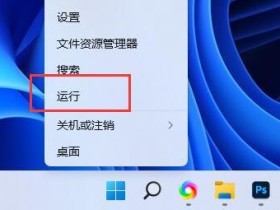1. 背景
需求:针对视频形式的数据输入,对每一帧图像,有多个神经网络模型需要进行推理并获得预测结果。如何让整个推理过程更加高效,尝试了几种不同的方案。
硬件:单显卡主机。
2. 方案
由于存在多个模型需要推理,但模型之间没有相互依赖关系,因此很容易想到通过并行的方式来提高运行效率。
对比了如下几种方案的结果,包括:
- 串行
- 线程
- 进程
- 协程
3. 实现
3.1 整体流程
配置了 4 个体量相近的模型。
为了屏蔽读取和解码的时间消耗对最终结果的影响,提前读取视频并准备输入。
统计每个单独模型执行推理的累积时间,以及整体的运行时间。
import asyncio
from time import time
def main():
frames = load_video()
weights = load_weights()
print('串行:')
one_by_one(weights, frames)
print('多线程:')
multit_thread(weights, frames)
print('多进程:')
multi_process(weights, frames)
print('协程:')
asyncio.run(coroutine(weights, frames))3.2 串行
读取到当前帧数据后,所有模型依次运行。
def one_by_one(weights, frames):
sessions = [init_session(weight) for weight in weights]
costs = [[] for _ in range(len(weights))]
since_infer = time()
for frame in frames:
for session in sessions:
since = time()
_ = session.run('output', {'input': frame})
cost = time() - since
costs[idx].append(cost)
print([sum(cost) for cost in costs])
print("infer:", time() - since_infer)
return3.3 多线程
为每一个模型分配一个线程。
from threading import Thread
def multit_thread(weights, frames):
sessions = [init_session(weight) for weight in weights]
threads = []
since_infer = time()
for session in sessions:
thread = Thread(target=run_session_thread, args=(session, frames))
thread.start()
threads.append(thread)
for thread in threads:
thread.join()
print("infer:", time() - since_infer)
return
def run_session_thread(session, frames):
costs = []
for frame in frames:
since = time()
_ = session.run('output', {'input': frame})
costs.append(time() - since)
print(sum(costs))
return3.4 多进程
为每一个模型分配一个进程。
由于 session 不能在进程间传递,因此需要在每个进程的内部单独初始化。如果数据较多,这部分初始化的时间消耗基本可以忽略不急。
from multiprocessing import Manager, Process
def multi_process(weights, frames):
inputs = Manager().list(frames)
processes = []
since_infer = time()
for weight in weights:
process = Process(target=run_session_process, args=(weight, inputs))
process.start()
processes.append(process)
for process in processes:
process.join()
print("infer:", time() - since_infer)
return
def run_session_process(weight, frames):
session = init_session(weight)
costs = []
for frame in frames:
since = time()
_ = session.run('output', {'input': frame})
costs.append(time() - since)
print(sum(costs))
return3.5 协程
为每一个模型分配一个协程。
async def coroutine(weights, frames):
sessions = [init_session(weight) for weight in weights]
since_infer = time()
tasks = [
asyncio.create_task(run_session_coroutine(session, frames))
for session in sessions
]
for task in tasks:
await task
print("infer:", time() - since_all)
return
async def run_session_coroutine(session, frames):
costs = []
for frame in frames:
since = time()
_ = session.run('output', {'input': frame})
costs.append(time() - since)
print(sum(costs))
return3.6 其他辅助函数
import cv2
import numpy as np
import onnxruntime as ort
def init_session(weight):
provider = "CUDAExecutionProvider"
session = ort.InferenceSession(weight, providers=[provider])
return session
def load_video():
# 为了减少读视频的时间,复制相同的图片组成batch
vcap = cv2.VideoCapture('path_to_video')
count = 1000
batch_size = 4
frames = []
for _ in range(count):
_, frame = vcap.read()
frame = cv2.resize(frame, (256, 256)).transpose((2, 0, 1))
frame = np.stack([frame] * batch_size, axis=0)
frames.append(frame.astype(np.float32))
return frames
def load_weights():
return ['path_to_weights_0',
'path_to_weights_1',
'path_to_weights_2',
'path_to_weights_3',]4. 结果及分析
4.1 执行结果
以batch_size=4共运行 1000 帧数据,推理结果如下:
| 方案 | 串行 | 线程 | 进程 | 协程 |
|---|---|---|---|---|
| 单模型累积时间/s | 7.9/5.3/5.2/5.2 | 13.5/13.5/15.6/15.7 | 13.5/13.8/13.7/13.6 | 6.5/5.2/5.3/5.3 |
| 总时间/s | 23.7 | 15.8 | 30.1 | 22.5 |
| 显存占用/MB | 1280 | 1416 | 3375 | 1280 |
| 平均GPU-Util | 约 60% | 约 85% | 约 70% | 约 55% |
- 在这个场景下,多线程是综合效率最高的方式(时间最短、显存占用合理、GPU 利用率最高);
- 串行作为最基础的方案,总时间就是每个模型执行时间之和;
- 多进程的方式,单模型的累积时间与多线程类似,但是总时间有明显增加,且极大增加了显存占用;
- 用协程的方式,总结果看,与串行模式本质上是一样的。
4.2 结果分析
4.2.1 关于线程方案
为什么多线程相比串行可以提高运行效率?
- 基本的判断是,
session.run()函数运行时,既有 CPU 执行的部分,又有 GPU 执行的部分; - 如果是串行方案,则 CPU 运行时,GPU 会等待,反之亦然;
- 当换用多线程方案后,当一个线程从 CPU 执行切换到 GPU 执行后,会继续执行另一个线程的 CPU 部分,并等待 GPU 返回结果。
4.2.2 关于进程方案
为什么多进程反而降低了运行效率?
- 基本的判断是,整体执行的瓶颈并不在 CPU 的运算部分,而是在于 GPU 上模型前向推理的计算部分;
- 因此,用多个进程并没有充分利用系统资源,多个 CPU 核心会争夺同一个 GPU 的计算资源,并增加了调度消耗。
4.2.3 关于协程方案
为什么看起来协程与串行的效果一样?
协程方案在执行过程中,从表现上来看:
- 单个模型的累积时间是逐步
print出来的,间隔大致等于每个模型的累积时间(而线程和进程方案中,几乎是同时输出 4 个模型的累积时间,说明是同时运行结束); - 显存占用是逐步增加的,最后达到与串行方案一致。
可能的原因:
- CPU 和 GPU 的任务切换,可能无法触发协程的切换,导致最终的效果是,一个模型完成了所有数据的推理后,再进行下一个模型的推理。
使用协程的必要性:
- 从线程改为协程,是为了进一步降低线程切换的消耗;
- 在这个场景下,需要同时执行推理的模型数量一般不会太多,建立同样数量的线程,系统资源的消耗是可控的;
- 因此,没有使用协程的必要性。
关于协程的使用,也是现学,有可能因为使用方法不当而得出以上的结论。如有错误,欢迎指正。






